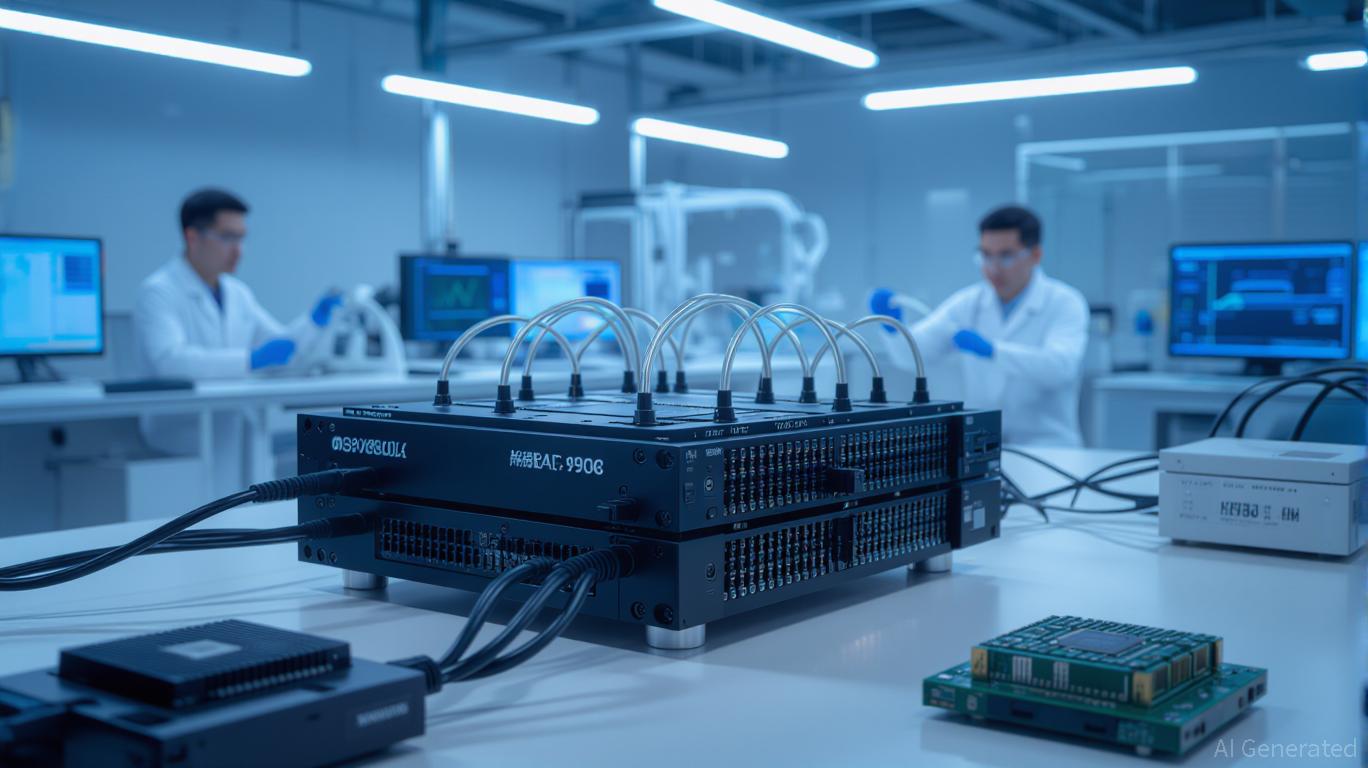The realm of computation is poised for a profound shift, potentially overshadowing the current enthusiasm surrounding AI. Novel technological advancements are set to reshape our methods of information processing, data retention, and human-machine interaction.
Beyond AI: the next frontier in computing
While artificial intelligence has dominated headlines and investment strategies over the past several years, experts warn that the next major revolution in computing may come from entirely different innovations. Quantum computing, neuromorphic chips, and advanced photonics are among the technologies poised to dramatically alter the landscape of information technology. These advancements promise not only faster processing speeds but also fundamentally new ways of solving problems that current computers struggle to address.
Quantum computing, specifically, has garnered worldwide interest due to its capacity to execute intricate computations well beyond the scope of conventional computers. In contrast to standard computers, which utilize bits as either ones or zeros, quantum computers depend on qubits capable of existing in several states concurrently. This feature enables them to process enormous datasets, enhance intricate systems, and resolve challenges in cryptography, materials science, and pharmaceuticals with unparalleled swiftness. Although practical, large-scale quantum devices are still under development, current experiments are already showcasing benefits in specialized uses like molecular modeling and climate simulations.
Neuromorphic computing represents another promising direction. Inspired by the human brain, neuromorphic chips are designed to emulate neural networks with high energy efficiency and remarkable parallel processing capabilities. These systems can handle tasks like pattern recognition, decision-making, and adaptive learning far more efficiently than conventional processors. By mimicking biological networks, neuromorphic technology has the potential to revolutionize fields ranging from robotics to autonomous vehicles, providing machines that can learn and adapt in ways closer to natural intelligence than existing AI systems.
The emergence of photonics and novel computing paradigms
Photonics, or the use of light to perform computations, is gaining traction as an alternative to traditional silicon-based electronics. Optical computing can transmit and process data at the speed of light, reducing latency and energy consumption while dramatically increasing bandwidth. This technology could prove essential for data centers, telecommunications, and scientific research, where the volume and velocity of information are growing exponentially. Companies and research institutions worldwide are exploring ways to integrate photonics with conventional circuits, aiming to create hybrid systems that combine the best of both worlds.
Other novel methods, like spintronics and molecular computation, are also appearing. Spintronics utilizes the electron’s quantum spin property for data storage and manipulation, potentially offering memory and processing power superior to existing hardware. Molecular computing, which employs molecules for logical operations, presents the possibility of shrinking components past the boundaries of silicon chips. These technologies are still mostly in the experimental phase, yet they underscore the vast innovation occurring in the quest for computing beyond AI.
Implications for industry and society
The influence of these emerging computational models will reach well beyond academic studies. Corporations, public administrations, and scientific organizations are getting ready for an era where challenges once deemed unsolvable can be tackled in mere hours or minutes. Enhancements in supply chain efficiency, climate prediction, pharmaceutical development, financial forecasting, and even national defense initiatives are poised to gain from more rapid, intelligent, and adaptable computing frameworks.
The race to develop next-generation computing capabilities is global. Nations such as the United States, China, and members of the European Union are investing heavily in research and development programs, recognizing the strategic importance of technological leadership. Private companies, from established tech giants to nimble startups, are also pushing the boundaries, often in collaboration with academic institutions. The competition is intense, but it is also fostering rapid innovation that could redefine entire industries within the next decade.
As computational methods advance, they might also transform our understanding of how humans and machines interact. Sophisticated system designs could facilitate devices that grasp context with greater insight, execute intricate logical processes instantly, and foster cooperative issue resolution across diverse fields. In contrast to today’s artificial intelligence, which largely depends on pre-existing models and extensive data collections, these emerging innovations offer more fluid, adaptable, and effective answers to various difficulties.
Preparing for a post-AI computing landscape
For businesses and policymakers, the emergence of these technologies presents both opportunities and challenges. Organizations will need to rethink their IT infrastructure, invest in workforce training, and explore partnerships with research institutions to leverage cutting-edge innovations. Governments must consider regulatory frameworks that ensure responsible use, cybersecurity, and equitable access to transformative technologies.
Education will also be a crucial factor. Equipping the upcoming cohort of scientists, engineers, and analysts to engage with quantum systems, neuromorphic processors, and photonics-driven platforms will necessitate substantial revisions to academic programs and skill acquisition. Interdisciplinary expertise—merging physics, computer science, materials science, and practical mathematics—will be indispensable for individuals entering this domain.
Meanwhile, ethical considerations remain paramount. Novel computing frameworks have the potential to exacerbate current disparities if their availability is restricted to specific geographical areas or organizations. Decision-makers and tech innovators are tasked with harmonizing the pursuit of progress with the imperative to guarantee that the advantages of sophisticated computing are distributed equitably throughout society.
The trajectory of artificial intelligence and its applications
Although artificial intelligence continues to draw worldwide interest, it represents just one facet of a broader surge in technological progress. The upcoming computing epoch could redefine machine capabilities, ranging from tackling complex scientific challenges to developing adaptable, brain-like systems that learn and evolve autonomously. Quantum, neuromorphic, and photonic innovations stand at the forefront of this transformation, promising levels of speed, efficiency, and functionality that surpass current digital paradigms.
As the frontiers of what’s achievable broaden, scientists, businesses, and authorities are getting ready to operate in an environment where computational strength ceases to be a constraint. The upcoming ten years might bring about a monumental technological transformation, altering how people engage with data, devices, and their surroundings—a period where computation itself evolves into a revolutionary power, extending far beyond the influence of artificial intelligence.



:format(jpg)/f.elconfidencial.com%2Foriginal%2Fb4b%2F704%2F3a9%2Fb4b7043a96f4f72460b218db5912e73f.jpg)
